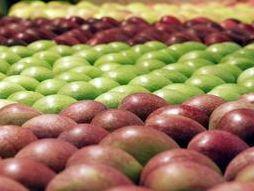
Poland's apple crop is expected to be lower than the initial 1.9m tonnes forecast at the recent Prognosfruit conference in Kiev, Ukraine, prompting further optimism among European suppliers about the category's commercial prospects for the coming few months.
Dominik Wozniak of leading Polish exporter Rajpol, who was speaking during a special panel discussion on the European apple market at this week's European Fruit Summit in Cesena, Italy, confirmed that all indications pointed to the Polish crop being below the initial estimate.
The implications for the European apple trade are clear: with overall production in 2010 already estimated to be around 11 per cent down on last season at approximately 9.8m tonnes – the second-smallest harvest for 15 years – a further downturn in the anticipated size of Poland's fresh crop could boost prices.
The news was welcomed by Josef Wielander, director of Italian apple exporter VI.P (Association of Val Venosta Fruit & Vegetable Cooperatives): 'We've come through a fairly difficult 2-3 years, with market prices falling and input costs rising. We have the chance at last to get the right price for our products from customers especially in the retail trade and the right returns for our grower members.'
With a significantly smaller amount of counter-seasonal product product left over from the Southern Hemisphere export campaign, the signs are already there that Europe's fresh apple market has started strongly in terms of pricing and the balance of supply and demand.
However, Stefan Weist of German company Landgard told delegates at the summit that maintaining a certain number of price promotions would remain a hugely important factor in determining the outcome of the season, insisting that lower volumes alone would not necessarily sustain demand and drive sales.
'I expect to see less of the crazy promotional prices as in previous years,' he predicted. 'But if there is too little in terms of promotions, there could end up being too much product left, even with a lower volume of production across Europe.'



